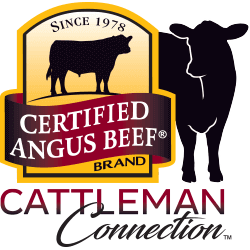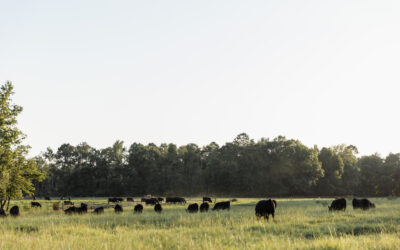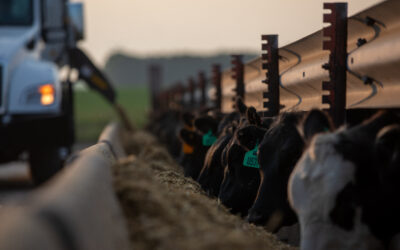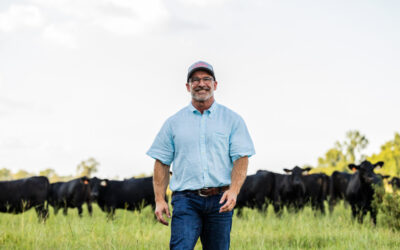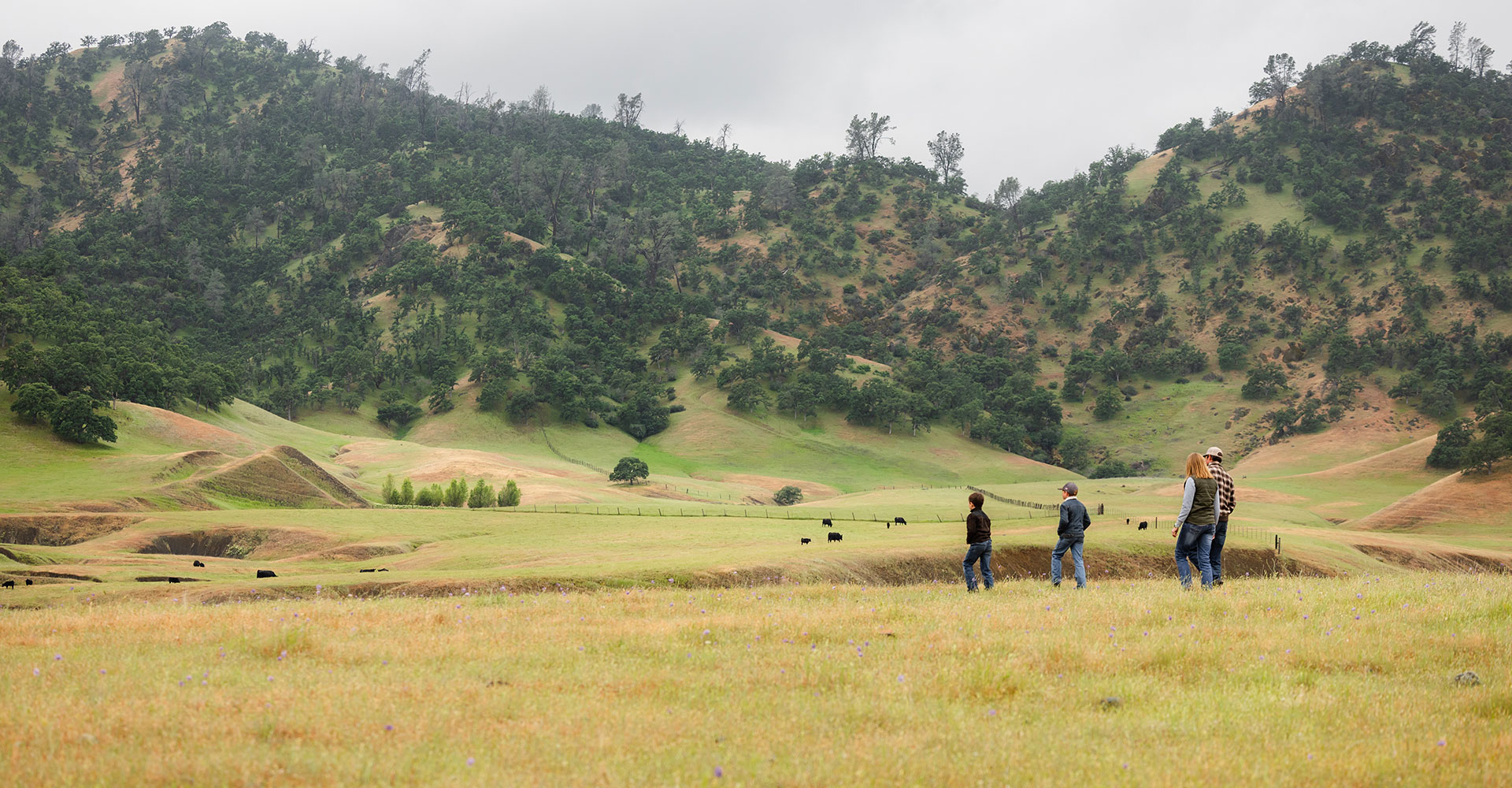
Legacy in the Golden Land
Tehama Angus Ranch honored for multi-generational commitment to balanced genetics and stewardship.
By Briley Richard, freelance writer for Certified Angus Beef
Stretches of orchard flash by like the rhythm of a lullaby in rows. Tucked into a horseshoe of mountain ranges, sunbeams cascade across a landscape more known for celebrities and coastlines than its vast, diverse farmland.
But on a quiet stretch of Northern California rangeland, a different story unfolds. The Borror family’s legacy modestly speaks through the cattle they raise, the ground they steward. The generations who’ve made a life here demonstrate commitment to doing things right, even when no one is watching.
“We don’t take it lightly,” Erin Borror says. “We are gifted with this land to be stewards of it, not only for our generations, but for everyone around us as well.”
This attitude applies to every aspect of Tehama Angus Ranch.
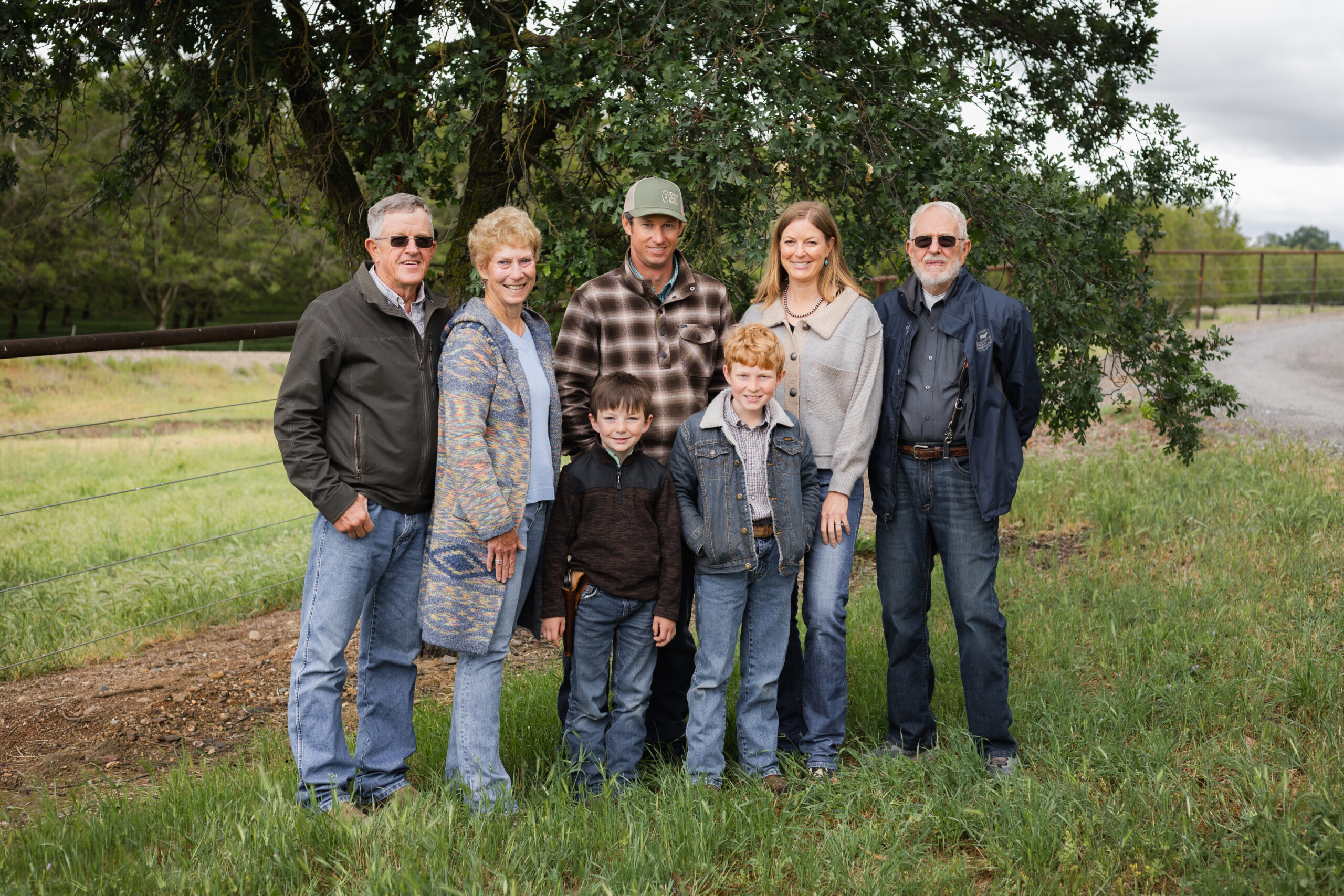
Caption: Front Row (L to R): Nolan and Clayton Borror; Back Row (L to R): Kevin, Linda, Bryce, Erin, Bill Borror
Balance by Design
With humble beginnings, William “Bill” Borror, set the foundation decades ago with his passion for cattle. Not a salesman by nature, he simply believed in raising the best cattle, leaning heavily on data and an unwavering eye for quality. That same quiet approach carried through to his son Kevin, and now his grandson Bryce, who serves as herdsman.
“Dad focused on the cattle,” Kevin says. “The cattle were his dream, and his passion was raising the best cattle that he could.”
Now in the role of mentor more than manager, Kevin recalls his own transition into leadership years ago, following a family pattern.
“My dad took over from his dad at a younger age, and I took over from my dad at a younger age. So I’m letting Bryce take over for me at a younger age.”
Bryce hit the ground running, paying keen attention to where the cattle live and what they consume nearly as much as the cattle themselves. The operation makes use of its diversified crops by converting walnut and almond hulls into supplemental feed and growing much of its own forage. Summer rotational grazing on irrigated pastures ensures the land that supported this family for more than half a century is well-equipped for generations to come.
“These pastures have been planted for 50 or 60 years, some of them,” Bryce explains. “We try to keep our land in the best shape we can by refreshing it and protecting it.”
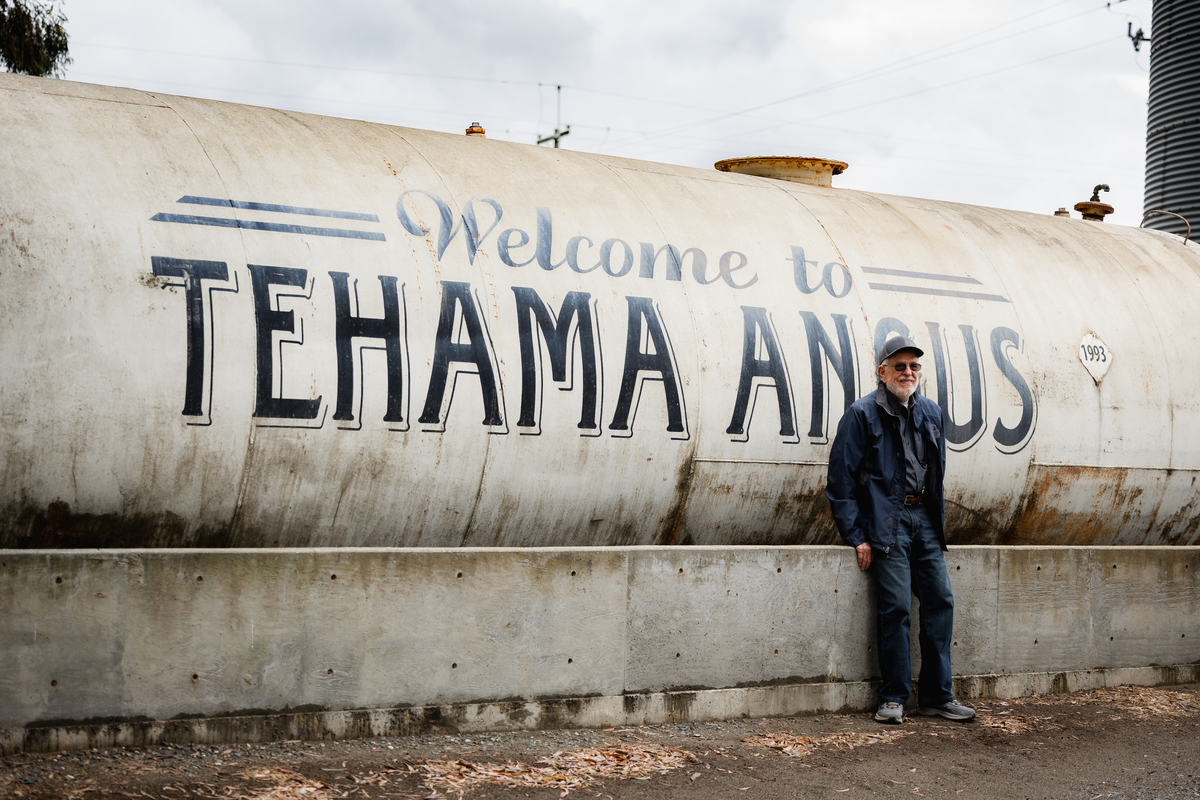
Caption: Bill Borror, founder of Tehama Angus Ranch.
Bryce has embraced his role with a focus on data-driven genetics and customer results. The Tehama Angus Ranch hosts an annual bull sale, serving a customer base as diverse as the region. But in the high desert or down on the coast, there’s one thing they’re all looking for: balance.
“Our customers are looking for balance-trait genetics,” he says. “They’re looking for bulls that’ll sire a really nice set of replacement females. So when we add in some carcass traits, that returns more to them when they go to sell their calves.”
Striking that balance means selecting genetics with strong maternal traits and solid carcass value, both tied to customer profitability. The Certified Angus Beef Targeting the Brand™ logo has become an invaluable tool for aligning their cattle with expectations.
“Our customers’ main goal is to hit CAB premiums and get rewarded for those carcasses,” Bryce says. “Targeting the Brand is the easiest way for us to bring out bulls that meet those specifications.”
And they don’t just talk the talk. For two years running, 62% of their bulls have earned the logo, which sends a clear signal to customers.
He adds, “Having that information so that they can flip through a sale book and say, ‘Okay, this is what I’m trying to shoot for,’ and then make sure it meets the rest of their requirements for their environment.”
Since most of their customers sell calves on a video sale, having a reputation for data-backed consistency is crucial. Whether it’s weights from start to finish, ultrasound or genomics, the Borrors not only collect vast data, but use it as a tool to help customers.
“We provide most all the information that’s out there,” Bryce says. “Obviously a lot of work to keep track of and collect, but we prioritize that for both ourselves and our customers. If we don’t share what we collect, then it’s just all a waste.”
That deep understanding of customers results in repeat business. The closed cow herd builds their reputation for consistent quality.
“Most of our customers are repeat customers; they’ve been with us a long time,” Bryce says. They expect similarity over the years, “but as we make improvement, they’re going to make improvement.”
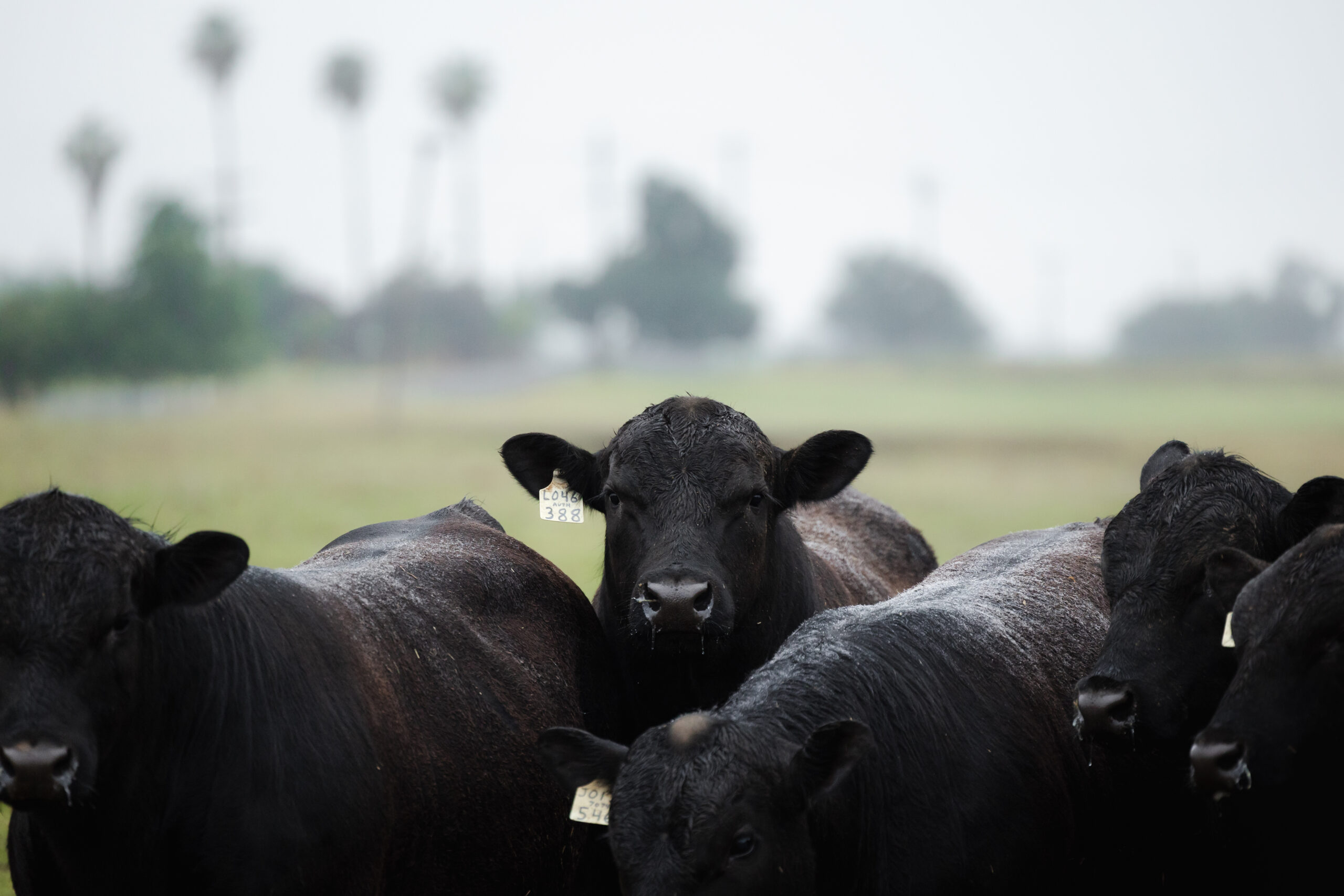
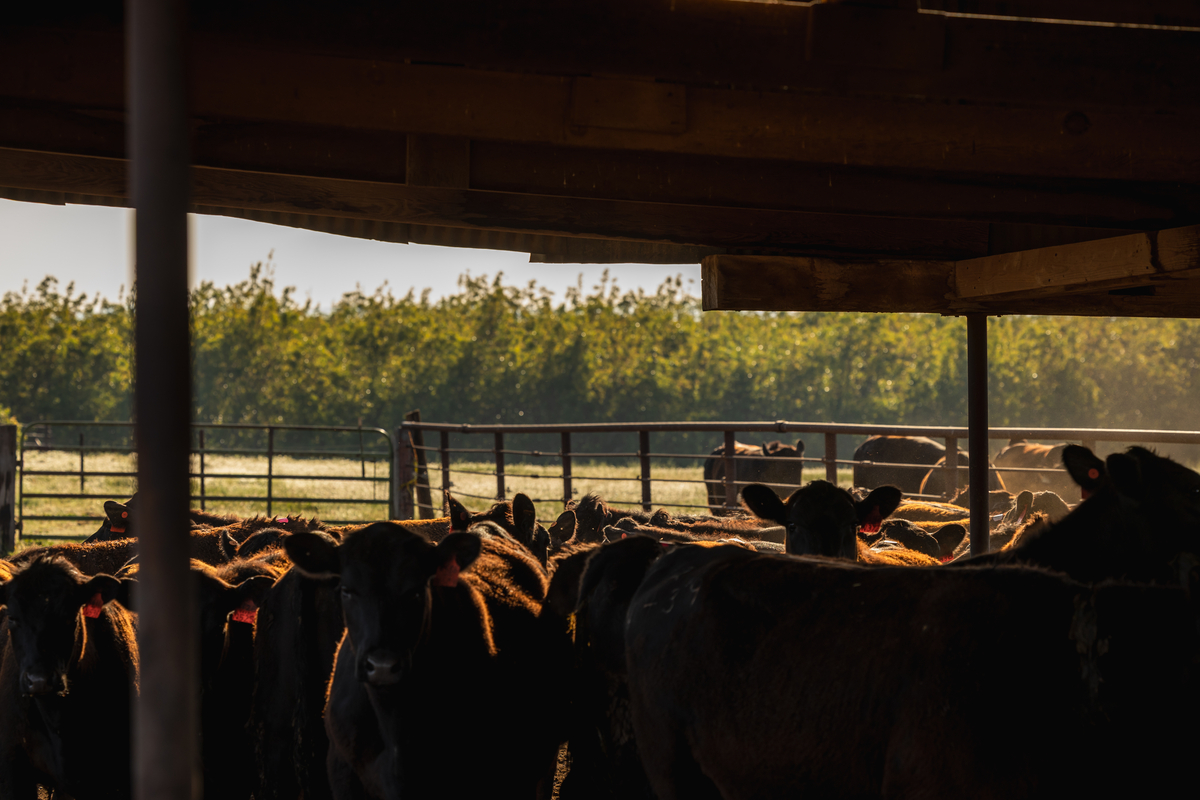
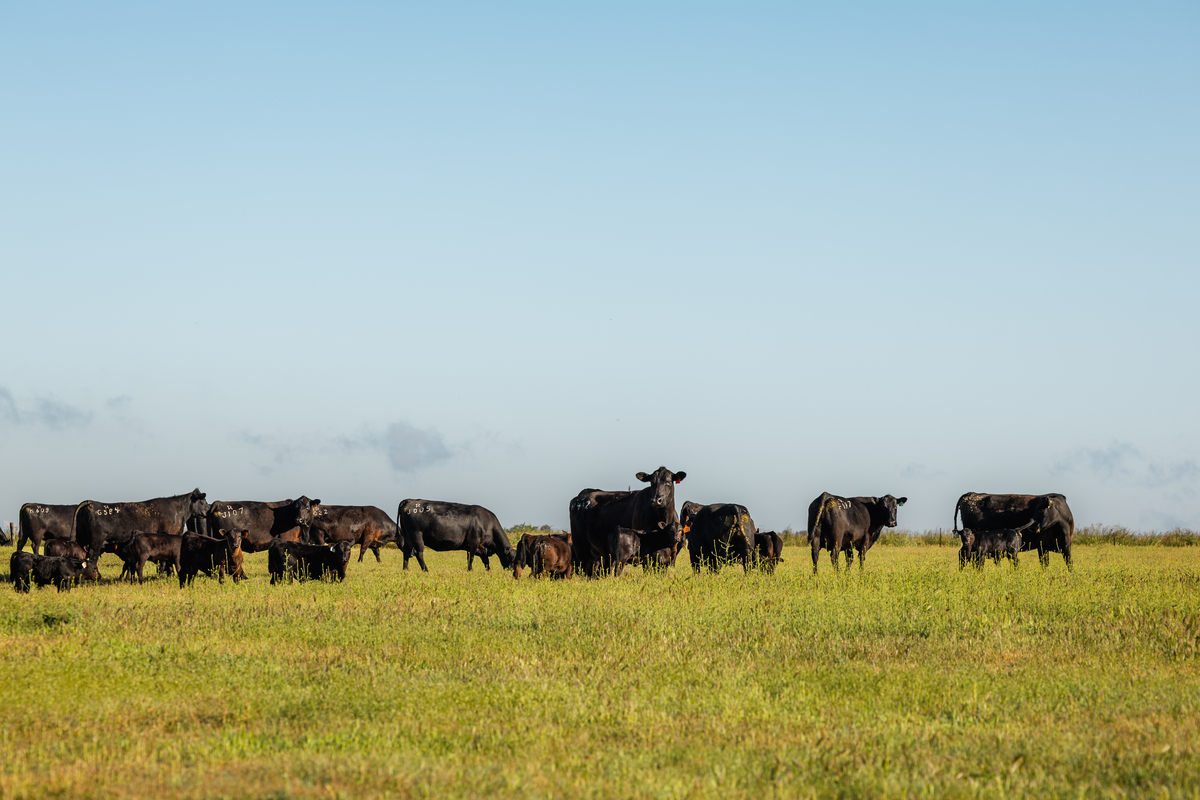
Staying the Course
Erin, Bryce’s wife and vice president of access and analysis at the U.S. Meat Export Federation, sees that ripple effect on a global scale. She also sees it at home.
“We think about how best to use these animals to make the land better,” she says. “We’re using cattle to improve our land and reduce fire risk here in California, but we’re also providing a superior eating experience with the beef that we raise.”
Erin balances her remote role with helping out on the ranch—riding along to check cows in the evenings, tagging calves and raising two boys who already idolize the generations above them.
“The time they spend with Kevin and Linda, with great-grandpa, it really is a kind of magic to have the generations together,” she says. “I hope that the pride in what we do they carry with them, even if they end up doing something else.”
Behind the scenes, much of the glue holding everything together is Linda, Kevin’s wife. From financials to cattle records to keeping the calendar straight, she manages it all. Raised on a commercial cow-calf operation herself, she understood the rhythm of ranch life before she married into it, but the weight of responsibility evolved as the family operation did.
“We kind of grew into it,” she says. “Kevin’s dad encouraged me to leave my job and start working with him. That gave me time to really learn it.”
Now everyone knows her recordkeeping is critical, “integral to the ranch.”
“But really,” Linda says, “I just do what needs done.”
That sense of quiet reliability runs deep in the Borror family. While the cattle operation has grown over the years—spreading out across more land while adapting to market and environmental pressures—it’s never been about chasing scale for the sake of it.
“Our growth wasn’t anything spectacular, not like the guy that starts with 50 acres, and then in 10 years grows to 5,000 acres,” Kevin says. “It’s always been moderate, but we can take care of it.”
A measured approach is one reason the Borrors remain sustainable. They’ve stayed grounded in California despite challenges, attributing family, customers and a deep sense of responsibility.
“There were times I just wanted out,” Kevin admits. “But you realize, our customers are here, our history is here, and if those guys stuck it out, why can’t I?” He adds assuringly, “So we’re here and we’re going to stay here.”
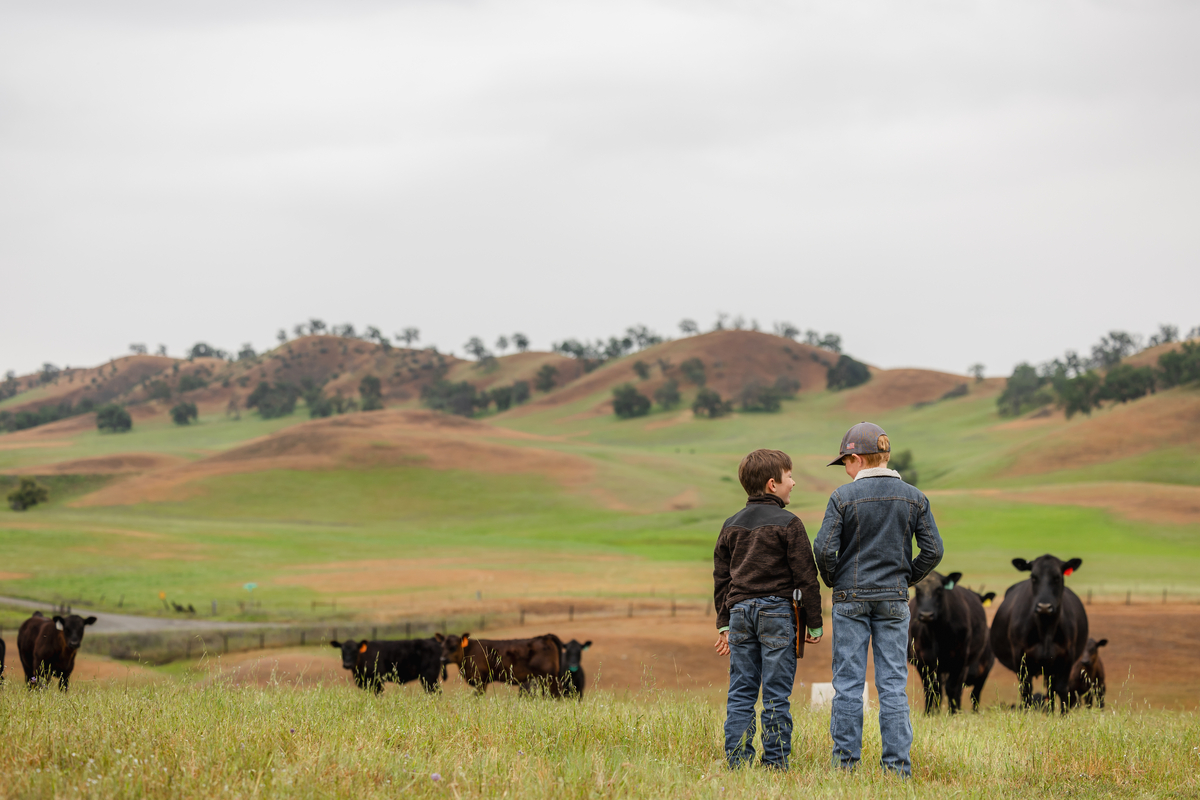
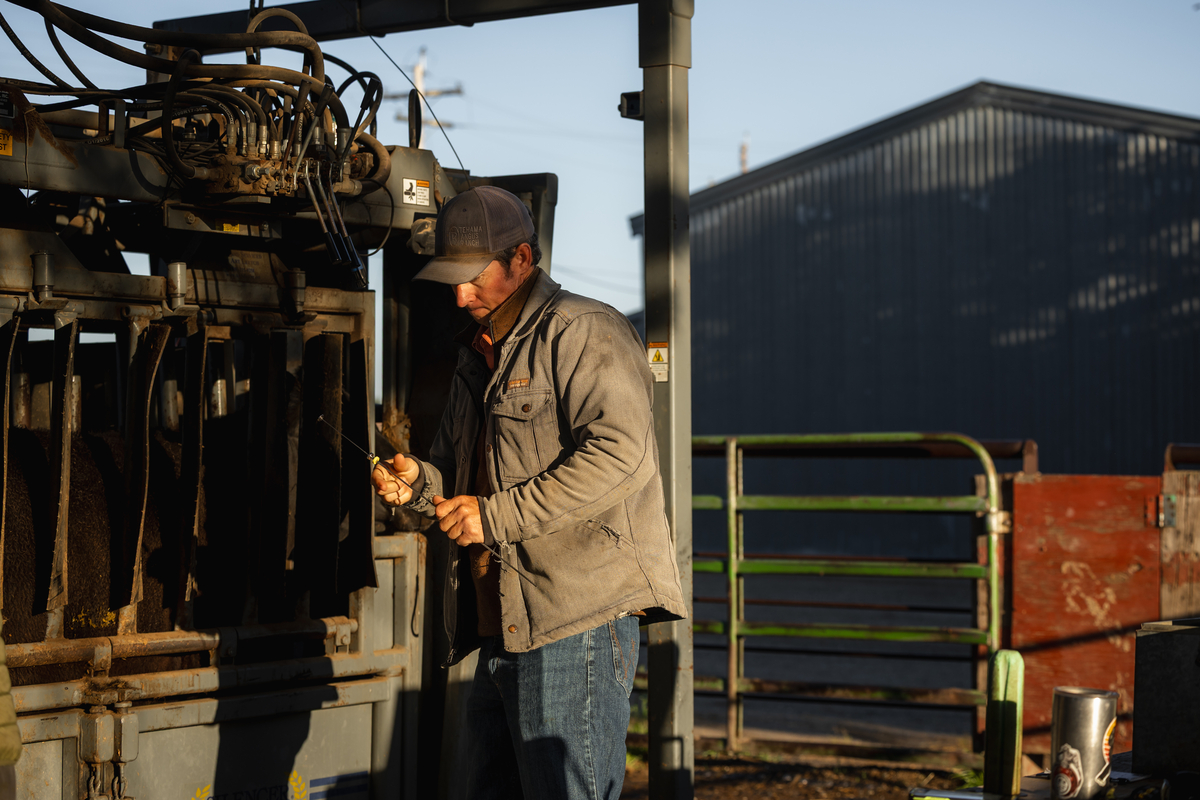
A Lasting Impact
This theme of tenacity and thoughtfulness factored into what led Tehama Angus Ranch earning the 2025 CAB Seedstock Commitment to Excellence award. For a family that doesn’t ask for recognition, it was meaningful.
“It’s truly an honor,” Kevin says. “And for my father, it’s well deserved. He’s put his heart and soul into these cows and he’s the one that fired the whole thing up years and years ago.”
As for the future, the family sees strength in its multi-generational structure.
“Life is great,” Kevin says. “We’re so fortunate to be in this business, not only the Angus business, but in agriculture. It has its struggles, especially in this state, but there will always be agriculture in California.”
Perhaps most importantly, Bryce and Erin’s sons are already learning what it means to be part of this legacy.
“We can’t imagine raising children any other way, especially both of us coming from ranching operations,” Erin says. “So it is a huge blessing to be able to bring these boys up the way we were both raised.”
Bill, past president of both the American Angus Association and the Beef Improvement Federation, echoes those sentiments, adding gratitude for decades of work and dreams.
“It’s a blessing for me to see all this in my career, because all we dreamed about doing 50 years ago has come to fruition,” he says
From Bill to Kevin to Bryce, three generations now tend Tehama land, with likely more to come. For the Borrors, the goal isn’t reinvention but staying true. True to the cattle, true to the land and true to what got them where they are today.
This story was originally published in the October 2025 Angus Journal.
You May Also Like…
Healthier Soils and Stronger Herds
Effective land stewardship requires an understanding of how each decision affects forage growth, cattle performance and long-term stocking rates. When land is the foundation of the business, producers are more likely to invest time and resources into managing it intentionally.
Big Shifts in Quality Grades
The 2025 quality grade trend tracked the USDA Prime grade a full percentage point higher than the prior year through August, averaging 11.5%. Since then, the Prime grade trend has defied seasonal expectations, normally setting a course toward a fall low in both Choice and Prime grade percentages.
Smitty’s Service on CAB Board
Lamb continues to find himself struck by just how far-reaching the Angus breed has become. The brand’s growing demand and rising prime carcasses left a strong impression. He hopes everyone recognizes the vital connection built between consumers and Angus producers. Humbled by the opportunity to serve, Lamb reflects on his time as chairman with gratitude.
